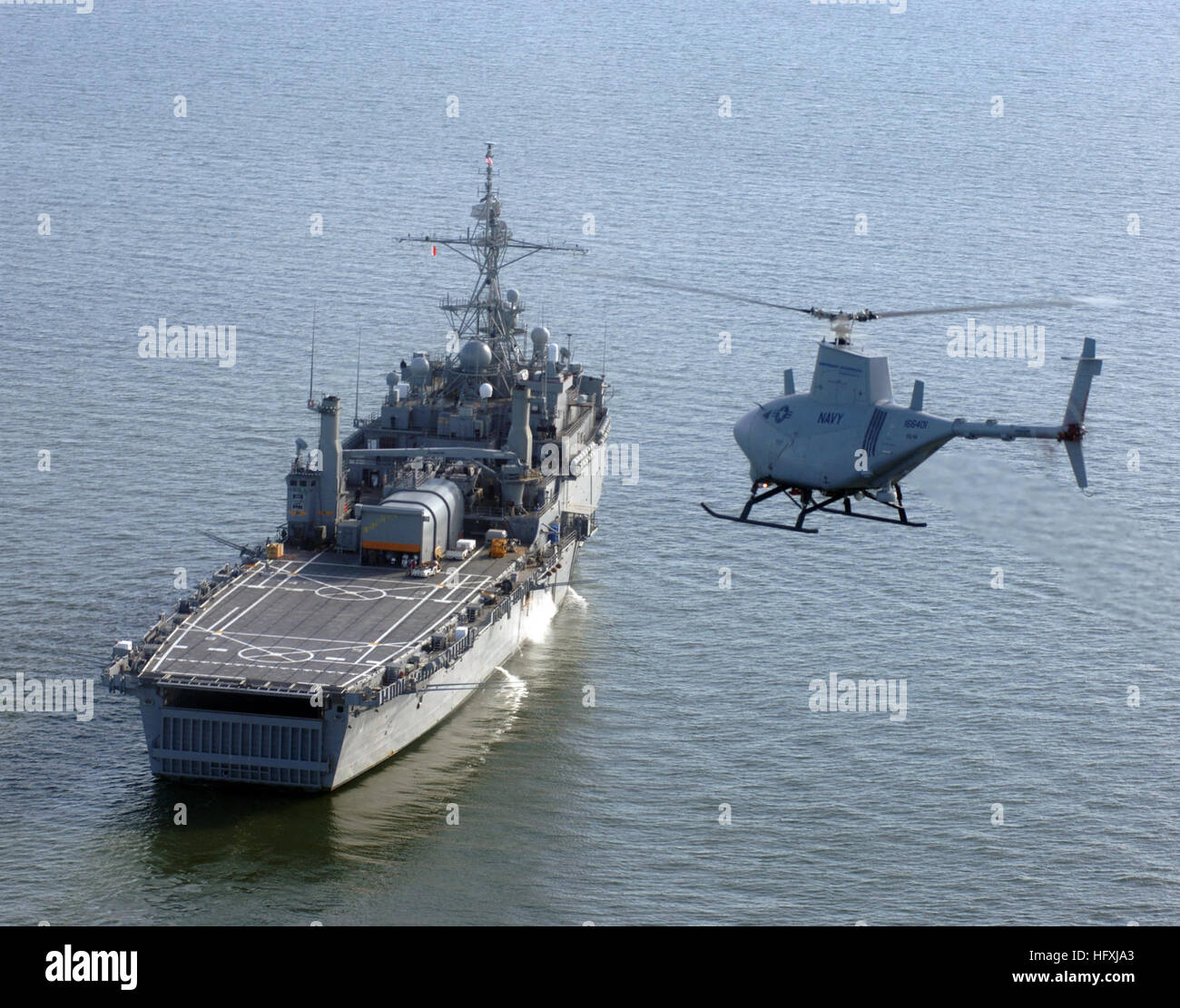An RQ-8A Fire Scout vertical takeoff and landing tactical unmanned aerial vehicle system prepares for the first autonomous landing aboard the amphibious transport dock ship USS Nashville (LPD 13) Jan. 17, 2006. With an on station endurance of over four hours, the Fire Scout system is capable of continuous operations, providing coverage at 110 nautical miles from the launch site. Utilizing a baseline payload that includes electro-optical/infrared sensors and a laser rangefinder /designator, Fire Scout can find and identify tactical targets, track and designate targets, accurately provide target

Image details
Contributor:
PJF Military Collection / Alamy Stock PhotoImage ID:
HFXJA3File size:
7.1 MB (460.4 KB Compressed download)Releases:
Model - no | Property - noDo I need a release?Dimensions:
1783 x 1401 px | 30.2 x 23.7 cm | 11.9 x 9.3 inches | 150dpiDate taken:
17 January 2006More information:
This image is a public domain image, which means either that copyright has expired in the image or the copyright holder has waived their copyright. Alamy charges you a fee for access to the high resolution copy of the image.
This image could have imperfections as it’s either historical or reportage.
An RQ-8A Fire Scout vertical takeoff and landing tactical unmanned aerial vehicle system prepares for the first autonomous landing aboard the amphibious transport dock ship USS Nashville (LPD 13) Jan. 17, 2006. With an on station endurance of over four hours, the Fire Scout system is capable of continuous operations, providing coverage at 110 nautical miles from the launch site. Utilizing a baseline payload that includes electro-optical/infrared sensors and a laser rangefinder /designator, Fire Scout can find and identify tactical targets, track and designate targets, accurately provide targeting data to strike platforms, employ precision weapons, and perform battle damage assessment. (U.S. Navy photo by Kurt Lengfield) (Released) USS Nashville LPD-13 with Fire Scout